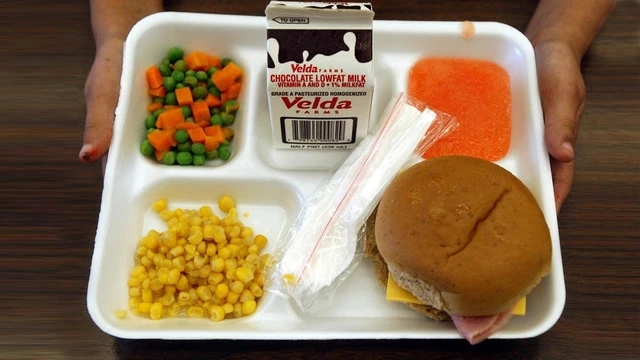
The US government strives to do the right thing. They provide food for free to students who attend a designated Title 1 school – which is a school where the poverty rate in the district is high enough that all students who attend there qualify for free breakfast and lunch. All well and good, right? Well – not so much.
Here’s how that munificence actually plays out in at least one locality. My school had a situation arise in this era of no substitutes where nearly 20 of our small high school’s faculty would be out on a given Friday. Being that they were utterly unable to obtain substitutes (not even by making the remaining staff sacrifice their planning periods and cover classes for colleagues) they decided to just make tomorrow a “virtual learning day.” OK – I get that.
However, because we are a Title 1 school and we provide federally funded free food to students daily, that meant our cafeteria staff had to scramble to provide and pack sack breakfasts and lunches for all of our students who would not be present at school to be fed, so they’d have food at home for the virtual learning day (yes we did this each day of virtual learning during the pandemic, too).
So, at the end of our regular instructional day, the admin called students to the cafeteria to collect a bag of food prepared for the next day – a breakfast and lunch. Having experienced this situation previously, I told my class that if they did not want the food that they were provided, to please give it to another student FIRST (because that’s who the food was paid for) but to PLEASE not throw away food, because I (as their teacher) would GLADLY accept food donations. I had one student in that class who took home two full grocery bags (paper bag size, not plastic bag size) that weighed so much he could hardly carry them. I hope his mom was thrilled that her son brought home so much food – probably a hundred dollar’s worth – from school. I ended up with a sizeable bag of food the kids didn’t want (the vegetables, mostly), which I actually will eat.
Class dismissed and students left the building. Then, I went “dumpster diving.” I have no shame. I went classroom to classroom on my hall and mined the trash cans of teachers who obviously did not tell their students not to throw away food. I left the building with EIGHT paper bag sized loads (more than 100 pounds) of food. It took me THREE trips to my car with as much as I could carry each time. Apples, juice, Pop Tarts, fingerling carrots, Ranch dressing, cheese sticks, a few Doritos chips bags. What the kids ate out of the food bags they got? They ate the chips (the least nutritious item in the bag), and the Smucker’s peanut butter and jelly “Uncrustable” sandwiches. They trashed the rest.
When I got home, the workers who were finishing a flooring job for me at home were happy to take home a bag of food. This is what I had left:
A bag of apples at my grocery store costs five bucks. I had at least four bags of retail apples (probably more), red and golden delicious. It’s a good thing I have a food dehydrator – I can preserve them for apple pies later this winter. I had almost two quarts of Ranch dressing. I got dozens of cheese sticks. I got well over a gallon of fruit juice (which I do not usually buy myself because it’s expensive) and I am enjoying it thoroughly this evening with Captain Morgan’s Black Spiced Rum. I got LOADS of Pop Tarts (which I won’t eat, either). I’m sending those with my husband to his job site where he has co-workers who have small children who will enjoy them. I have enough fingerling carrots to eat them daily at lunch and dinner for about three weeks. Good thing I like them!
I get it that our school has a high poverty rate in our district and we qualify for federal food assistance for all of our students. HOWEVER. This has happened over and over again in my county. Because I abhor waste, I will trash dive to recover perfectly good food our students throw away. What this means is that I look forward to “days off” when students are provided food, because I take home hundreds of dollars worth retail cost food per year – every time that I rescue from the trash what the students discard.
I am benefitting. I am not the one who is supposed to be benefitting. Still, I’m not going to let the perfectly good food just be thrown away – that’s just WRONG. *sigh*
How to fix this? I do not know. Since I can’t fix it, I will continue to save food that would be trashed. Maybe this is a job benefit?